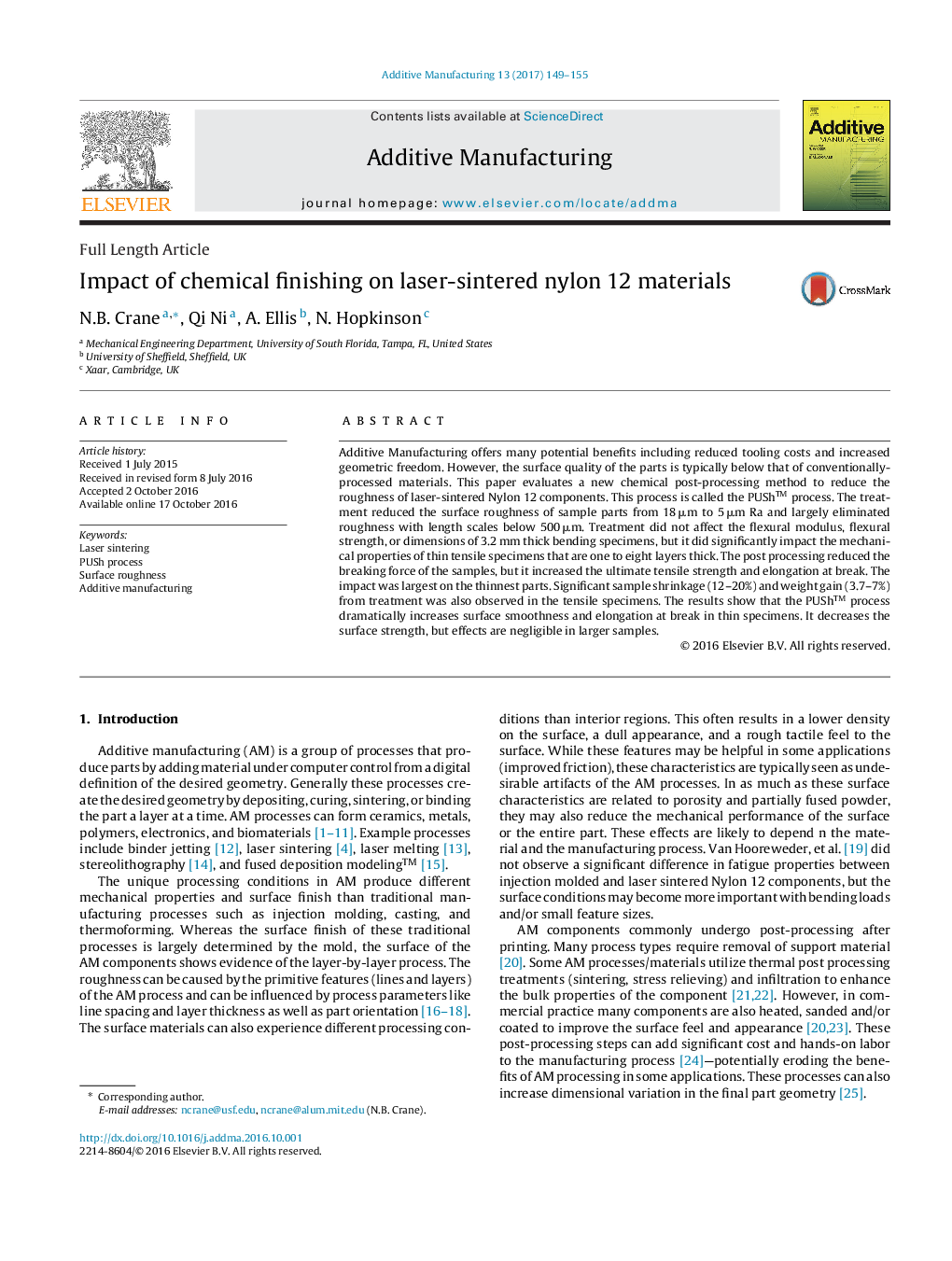| Article ID | Journal | Published Year | Pages | File Type |
|---|---|---|---|---|
| 5020107 | Additive Manufacturing | 2017 | 7 Pages |
Additive Manufacturing offers many potential benefits including reduced tooling costs and increased geometric freedom. However, the surface quality of the parts is typically below that of conventionally-processed materials. This paper evaluates a new chemical post-processing method to reduce the roughness of laser-sintered Nylon 12 components. This process is called the PUSh⢠process. The treatment reduced the surface roughness of sample parts from 18 μm to 5 μm Ra and largely eliminated roughness with length scales below 500 μm. Treatment did not affect the flexural modulus, flexural strength, or dimensions of 3.2 mm thick bending specimens, but it did significantly impact the mechanical properties of thin tensile specimens that are one to eight layers thick. The post processing reduced the breaking force of the samples, but it increased the ultimate tensile strength and elongation at break. The impact was largest on the thinnest parts. Significant sample shrinkage (12-20%) and weight gain (3.7-7%) from treatment was also observed in the tensile specimens. The results show that the PUSh⢠process dramatically increases surface smoothness and elongation at break in thin specimens. It decreases the surface strength, but effects are negligible in larger samples.
